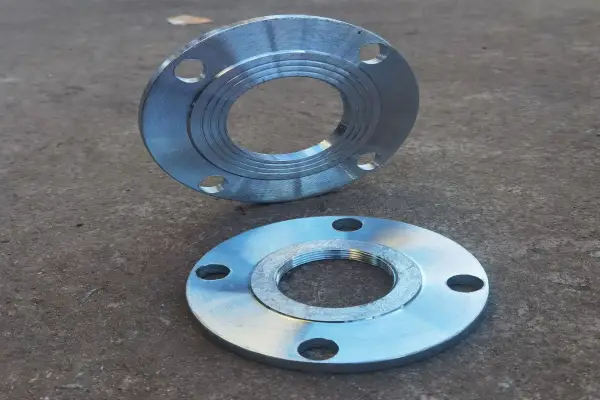ASTM A105 vs. ASME SA105: A Comprehensive Comparison
When discussing forged carbon steel materials, ASTM A105 and ASME SA105 often emerge as key standards. Both are widely used in manufacturing pipe components for pressure systems. While they seem similar, understanding their distinctions can help in selecting the appropriate material for specific applications.
What Are ASTM A105 and ASME SA105?
ASTM A105
ASTM A105 refers to a standard for forged carbon steel piping components. These components include
flanges,
valves, and fittings for high-temperature service. It is recognized globally for its versatility and durability.This type of carbon steel forging alloy involved is a low carbon, manganese and silicon containing steel similar to AISI 1330, but with lower manganese content.
ASME SA105
ASME SA105, is part of the ASME Boiler and Pressure Vessel Code (BPVC). It shares many specifications with ASTM A105 but focuses on components used in pressure vessels. This makes it critical in applications requiring compliance with ASME codes.This grade is used primarily for steel piping components for low temperature, ambient and higher temperature service as required by ASME specification SA-105 (Specification for Carbon Steel Forgings for Piping Applications) and ASME Specification SA-350 (Specification for Carbon and Low-Alloy Steel Forgings, Requiring Notch Toughness Testing for Piping Components).
Key Similarities Between ASTM A105 and ASME SA105
Both standards specify forged carbon steel. This material is selected for its strength and performance under pressure. They share mechanical properties like tensile strength and yield strength. Additionally, they both allow seamless and welded piping connections.
Furthermore, chemical compositions are nearly identical. Elements like carbon, manganese, and phosphorus are controlled within tight ranges. This ensures uniformity across different batches of production.
Differences Between ASTM A105 and ASME SA105
The primary difference lies in their applications and compliance requirements. ASTM A105 is commonly used in general piping systems. Its versatility makes it a preferred choice in oil and gas industries.
ASME SA105, however, is specifically intended for pressure vessels. Components under this standard undergo stricter quality checks. These checks ensure reliability under high-pressure conditions.
Another distinction is the testing process. ASME SA105 components often include additional inspections. These may involve non-destructive testing (NDT) to verify internal integrity.
|
Aspect
|
ASTM A105
|
ASME SA105
|
|
Regulation Body
|
Overseen by ASTM standards.
|
Included in ASME BPVC.
|
|
Testing
|
May not always require additional testing unless specified.
|
Often requires stricter testing to meet ASME compliance.
|
|
Certification
|
Used for general piping applications.
|
Mandatory for pressure vessels and boilers.
|
|
Marking
|
Marked as ASTM A105.
|
Marked as ASME SA105 with BPVC references.
|
Which Standard Should You Choose?
The choice depends on your project requirements. For standard piping systems, ASTM A105 is sufficient. It offers flexibility and cost-effectiveness for most industrial applications.
For projects involving pressure vessels, ASME SA105 is mandatory. Adhering to ASME BPVC ensures compliance and safety. This is crucial in environments where failure is not an option.
Applications of ASTM A105 and ASME SA105
ASTM A105 is widely used in pipeline construction and petrochemical processing. Its high-temperature resistance and strength make it a reliable choice.
ASME SA105 finds its place in boiler systems and pressure vessels. It is ideal for environments with extreme pressure or thermal conditions. Both standards have proven their worth in industrial settings.
Forged ASTM A105 Pipe Flanges
ASTM A105 Flange is a specification of flanges. The specification can include different grades of stainless steel material made flanges. The flanges are of forged carbon steel and are meant for high temperature services. Baowi Steel is a leading manufacturer and supplier of the ASTM A105 Flange types.
The material has carbon, manganese, phosphorus, sulfur, silicon, copper, nickel, chromium, molybdenum and vanadium in its composition. Since the other materials are less than 1% of the composition, these are called the carbon steels. There are different types such as the SA105N Blind Flange which is used to close a pipe line. The flanges also have good strength properties. The minimum yield strength of the flanges is 250MPa and the minimum tensile strength is 485MPa. The material is also hard with a Brinell hardness score of 187.

Conclusion
In summary, ASTM A105 and ASME SA105 share many similarities but serve different purposes. Understanding their differences ensures the correct material is selected. This reduces risks and improves project efficiency.
When in doubt, consult with industry professionals or
suppliers. They can provide tailored advice for your specific needs. Choosing the right standard is essential for long-term performance and safety.






 English
English Español
Español بالعربية
بالعربية











 Phone :
Phone :  Whatsapp :
Whatsapp :  Email :
Email : 


